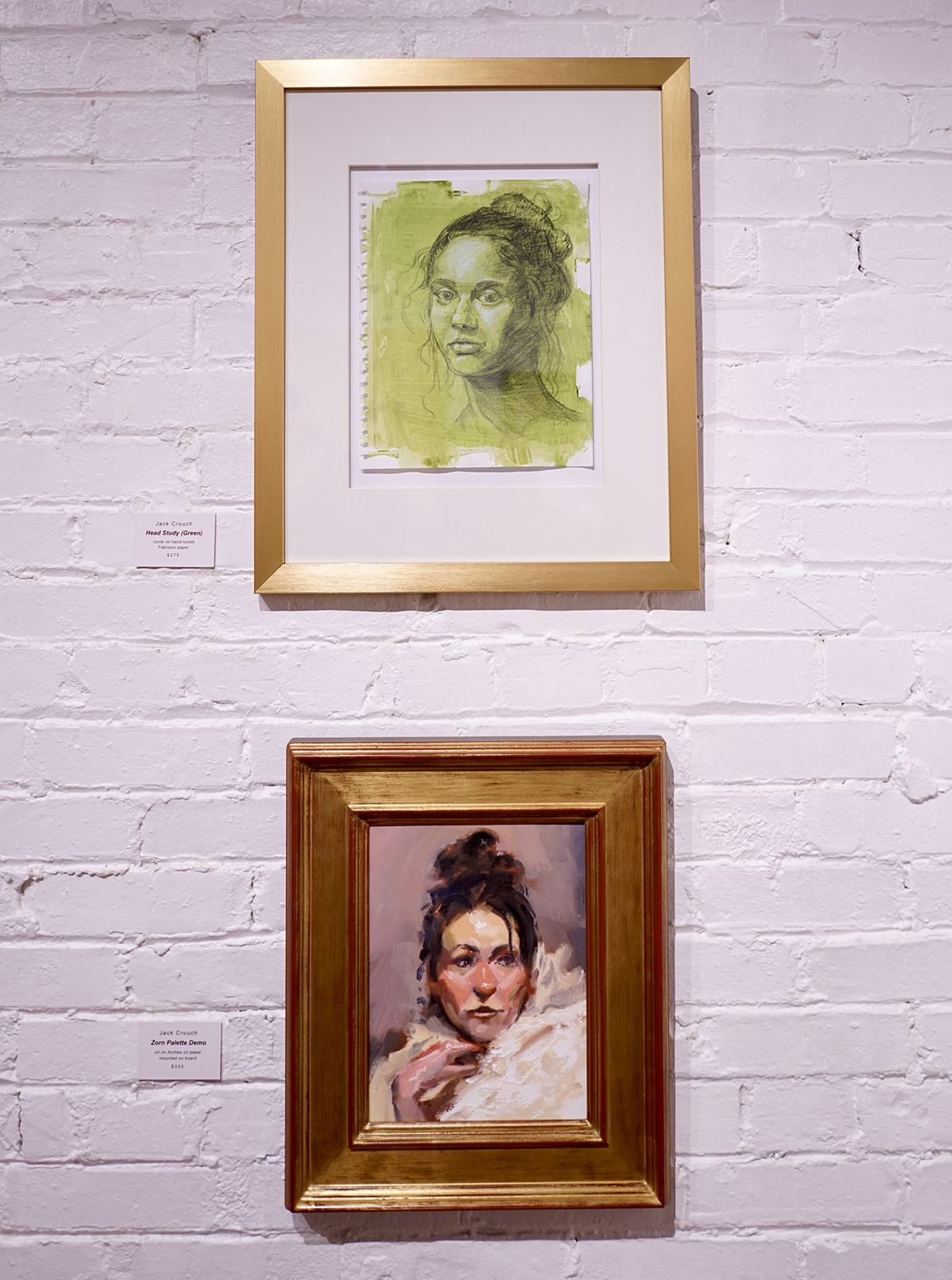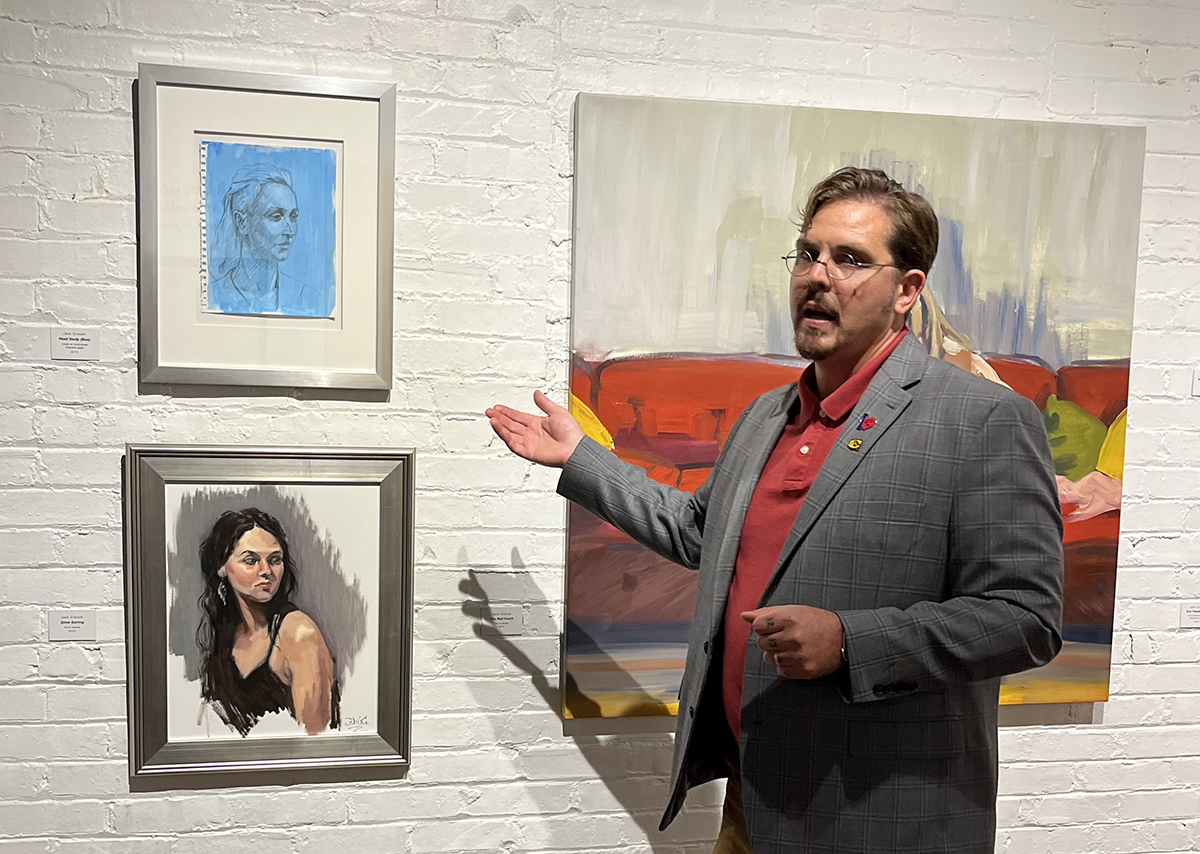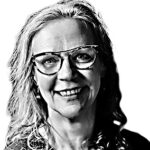This past summer the Contemporary Art Center on Water Street presented “Jack Crouch: An Exploration of the Figure.” This beautiful grouping of oil paintings was totally contemporary yet held deep roots in art history. A consummate teacher, Crouch’s work is founded in the practice and product of hours-long investigations of light and shadow, gesture, context and emotion found in the study of human form. As Crouch hones his expertise, he shares every stage with his students. Those in attendance at his artist’s talk were privileged to become acquainted with his process.
Largely misunderstood and mostly out of favor, painting the nude model is Crouch’s chosen subject. A viewer brings their own response to paintings of the unclothed but the actual process of studying the nude — learning anatomy and proportional structures — is fundamental to any type of portraiture. Crouch’s intent is to offer an examination of our own relationship to flesh and what is experienced through physical sensations. He challenges us to think about our own identities, our preconceptions, vulnerabilities, voyeuristic tendencies, and the role of sexuality as part of the human experience.

Crouch’s artwork allows us to explore the relationship between viewer and subject as well as subject to painter.
LISA NELSON RAABE
Crouch completed his MFA at Bradley University in 2020 and is an assistant professor at Cameron University in Lawton, Okla. He is currently writing a book on oil painting and the figure, intended as a resource guide to portrait painting. Crouch exhibits his work nationally and received a Citation of Recognition from the state of Oklahoma.
The CAC exhibition had numerous small portrait studies in the à la prima style. This way of working is directly painted with broad strokes of luscious hues composing structure through planes of color. He offers a tactile sense of form in space and the resulting emotion presented in facial expression. These studies are preparatory for his much larger canvases and serve as direct demonstrations for his students.
Life-size works are created in several steps. Crouch accesses professional models to work in real life, photographically and via the computer screen. He uses digital media of all sorts to find the images he is interested in, often combing numerous resources to create mood and tone. Extensive digital manipulation augments, distorts and emphasizes aspects of the figure such as head and hand size and proportions of the torso and limbs. He arrives at his final composition after hours of comparing small screen images to the actual life-size painting, a very contemporary approach to a centuries-old subject.

Jack Crouch discusses a pair of his pieces at the Contemporary Art Center earlier this summer.
LISA NELSON RAABE
Crouch presents minimal architecture references, allowing us to read the figure in the present tense, not rooted in a particular environment or time. Layers of color create a field which supports and challenges us into a series of relationships — viewer to subject, subject to painter — and the psychological relationship between viewer and painter. Crouch’s work references Édouard Manet who painted in the 1800s as well as more contemporary figurative painters Philip Pearlstein, Eric Fischl and Lucian Freud. In figurative painting we move past “the nude” into awe and respect for humanity, the expressiveness of embodiment.
When so much discussion focuses on “Whose body is it?” with abortion rights, sexually expansive people, gender identity and our branding through hair and clothing, we are brought back to the simplicity of the body as vehicle for expression before reading into a political context or story line. Crouch’s work has in the past included epic themes and grand associations to art history. This current body of work stays closer to pure study and practice. By diligently focusing on anatomy, form, light, shadow and compositional elements, Crouch’s students are receiving the best of both worlds, an artist who can clearly articulate process as well as demonstrate it with masterful skills.


Recent Comments